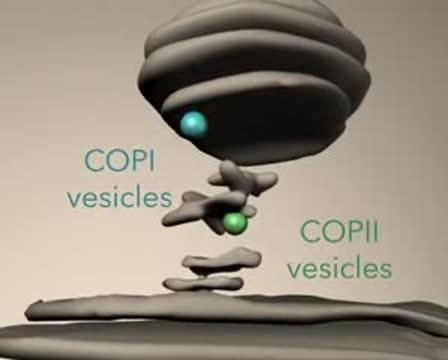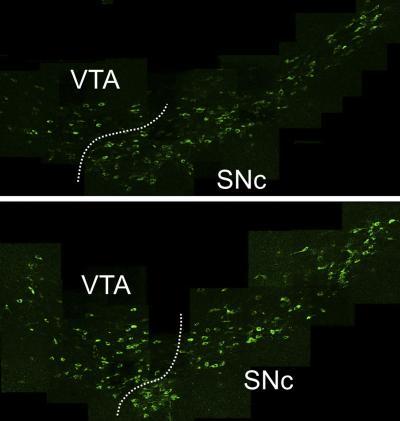Unexpectedly, the researchers discovered that nicotine's ability to up-regulate ∝6* nAChRs relied on the retrograde transport of ∝6* nAChRs back from the Golgi to the ER by COPI-coated vesicles. The authors believe that Golgi–ER cycling (involving COPI vesicles) may be a common mechanism for up-regulation of other nAChRs by nicotine. Manipulation of this process could therefore help form new strategies for smoking cessation and neuroprotection against Parkinson's disease.

This video animation shows how nicotine acts as a chaperone for receptors called nAChRs in neurons, promoting their exit from the ER and eventually increasing their abundance at the plasma membrane. Nicotine-mediated activation of nAChRs also depends on the COPI machinery involved in Golgi–ER transport of nAChRs. The findings could help form new strategies for smoking cessation and neuroprotection against Parkinson's disease.
(Photo Credit: Mary O'Reilly, O'Reilly Science Art)

Chronic exposure to nicotine (bottom image) up-regulates fluorescently labeled receptors known as nACHRs (green) in the substantia nigra pars compacta (SNc) and ventral tegmental (VTA) areas of the mouse brain. Up-regulation of nAChRs plays a major role in nicotine addiction and, possibly, in the decreased susceptibility of smokers to Parkinson's disease.
(Photo Credit: Henderson et al., 2014)
Source: Rockefeller University Press